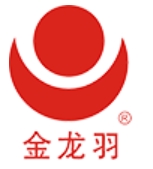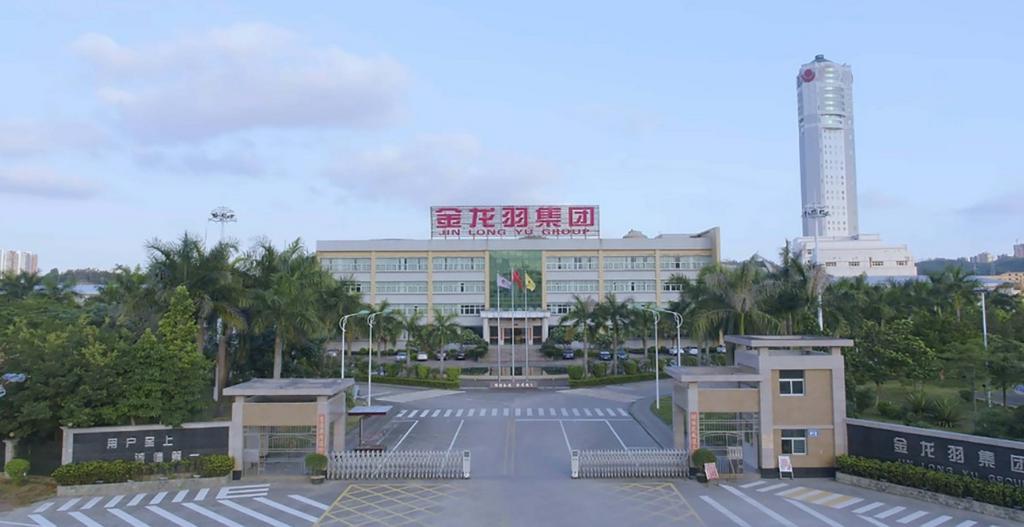






SMM October 20 News:
Highlights: Jinlongyu's solid-state battery business is being advanced by Jinlongyu New Energy (Huidong) Co., Ltd., which was established in February 2025 by Jinlongyu's controlling subsidiary, Jinlongyu New Energy (Shenzhen) Co., Ltd., with a registered capital of 100 million yuan. In April 2025, the company planned to invest 1.2 billion yuan to build a mass production line for key solid-state battery materials in the Huizhou New Materials Industrial Park, comprising 870 million yuan in construction investment and 330 million yuan in working capital. The project covers a land area of 79,561.2 m², with a construction period expected not to exceed three years.

As a "solid-state battery concept stock" closely watched by the capital market, every move in Jinlongyu Co., Ltd.'s solid-state battery business attracts market attention. This article aims to systematically review its business layout, technological progress, core advantages, and potential risks, providing an objective and professional assessment for investors and industry practitioners.
I. Strategic Layout and Organizational Structure
Jinlongyu's solid-state battery business is primarily carried by its subsidiary system. To promote the industrialisation of this business, Jinlongyu New Energy (Shenzhen) Co., Ltd. specifically established Jinlongyu New Energy (Huidong) Co., Ltd. in February 2025, with a registered capital of 100 million yuan. This move clarified the operational entity for its solid-state battery business and paved the way for subsequent large-scale capital investment.
In terms of capacity planning, the company announced in April 2025 that it plans to invest 1.2 billion yuan to build a mass production line for key solid-state battery materials in the Huizhou New Materials Industrial Park. The project covers a land area of approximately 79,600 m², with a construction period expected not to exceed three years. This indicates that the company's strategy has officially shifted from laboratory R&D to the preparation stage for scaled production.
II. Technology Route and R&D Progress
Jinlongyu has adopted a pragmatic technology path of "achieving breakthroughs in semi-solid-state in the near term and focusing on all-solid-state in the long term."
1. Current Focus: Polymer Semi-Solid-State Battery
Technology Positioning: Not an all-solid-state battery with "zero liquid," but one using gel/solid-liquid composite polymer electrolytes, significantly reducing the proportion of liquid electrolyte.
Advantages: Compared to traditional liquid lithium batteries, it shows significant improvements in both safety (reducing leakage and combustion risks) and energy density.
Current Status: According to company announcements, it is currently in the pilot stage. This means the company is conducting process verification, stability testing, and cost assessment on a small-scale trial production line, preparing for eventual scaled mass production.
2. Long-Term Goal: Oxide System All-Solid-State Battery
The company regards the oxide electrolyte system as the long-term R&D direction for achieving the ultimate goals of high safety and high energy density. However, this technology route still faces global challenges in interface impedance control and scaled manufacturing. The oxide solid-state battery route is one of several major solid-state battery routes.
III. Core Technical Capabilities and Material Breakthroughs
The core of Jinlongyu's R&D lies in its deep collaboration with the research team of Professor Li Xinlu from Chongqing University. The company has formed an R&D team of over 60 people, equipped with advanced experimental equipment, establishing a complete technology chain covering key materials such as solid-state electrolytes, silicon carbon anodes, and lithium-rich manganese-based cathodes.
Its specific technological achievements are remarkable: Cathode + Electrolyte, etc.
1. Cathode Material: The self-developed lithium-rich manganese-based cathode material is compatible with sulphide solid-state electrolytes, achieving a cycle life exceeding 2,000 cycles, an energy density over 30% higher than traditional ternary cathode materials, and a cost reduction of 15%–20%, offering both performance and cost advantages.
2. Electrolyte Material: The oxide solid-state electrolyte produced using low-cost dry process technology has completed customer sample evaluation, demonstrating potential for cost control in industrialisation.
3. Intellectual Property: Currently, Jinlongyu possesses several authorized invention patents related to solid-state batteries, covering core technologies such as electrolytes, anodes, and cathodes, establishing a preliminary intellectual property barrier.
IV. Development Process and Key Periods (mainly from the 2025 Semi-Annual Report)
1. On August 11, 2021, the fourth (interim) meeting of the third session of the Board of Directors and the fourth meeting of the third session of the Supervisory Committee were held, approving the proposal on "the signing of the Framework Agreement on Joint Development of Solid-State Battery Related Technologies and Industrialisation by Huizhou Jinlongyu Cable Industry Development Co., Ltd., a subsidiary, and Chongqing Jintianyi New Energy Technology Co., Ltd." The subsidiary plans to invest no more than 300 million yuan over five years in joint research and development of solid-state battery and its key material technologies with Jintianyi, and to promote the industrialisation of research results.
2. R&D investment exceeded 40 million yuan, up 157.83% YoY, mainly due to increased investment in the solid-state battery project. Construction-in-progress expenses amounted to over 80 million yuan, primarily due to increased investment in factory and equipment for the solid-state battery project.
3. Risks associated with the layout of the solid-state battery and its key materials industry: The domestic solid-state battery industry is still in the early stages of industrialisation, and large-scale mass production has not yet been achieved. If industrialisation and commercialisation are delayed, industry standards change, or there are significant technological shifts, and if downstream customer expansion does not meet expectations, it may affect the capacity utilisation rate of the company's construction projects, leading to unrecoverable R&D and construction investments or failure to achieve expected returns. The company will make phased investment expenditures, closely monitoring its asset-liability situation; it will also reserve multiple technology routes, guided by national policies and standards, and oriented towards market demand, to advance R&D and market development in phases.
4. Progress of the company's solid-state battery and key materials project is as follows:
(1) In terms of battery cells, the semi-solid series batteries have passed customer detection and received customer orders.
(2) Regarding electrolytes, application solutions for multiple electrolyte systems and synthesis process routes for all-solid-state electrolyte materials have been determined. A low-cost dry-process electrolyte product has been developed. Oxide electrolyte products have completed sample delivery and evaluation for multiple customers and have passed customer detection.
(3) For separators, coating development for various material systems and structures has been completed, and a low-cost, high-heat-resistant separator product has been developed. Ion conductor membrane products have completed sample delivery and evaluation for multiple customers and have passed customer detection.
(4) Concerning anodes, the production process for silicon-based anode materials has been validated, and performance verification of pouch batteries using self-developed silicon-based anode materials has been conducted, meeting internal requirements. Sample delivery and evaluation for multiple customers have been completed, and the products have passed customer detection.
(5) In cathodes, a hundred-kilogram-level synthesis and preparation process for LMFP cathode materials has been carried out, meeting the requirements of the group standard T/CIAPS0029-2023. Performance verification of pouch batteries has been conducted, meeting internal test requirements, and cost-reduction processes for synthesis have been developed. Material performance optimisation according to customer needs and continuous sample testing for customers have been carried out.
Although the company's solid-state battery and key materials business currently has orders, it has not yet formed long-term stable revenue and does not significantly impact the company's overall performance. Affected by macroeconomic, industry policy, and market environment changes, the project also faces risks of industrialisation and commercialisation falling short of expectations.
SMM believes that Jinlongyu's strategic layout in the solid-state battery field, with strong enforcement, especially in key material R&D, has achieved notable laboratory results, giving it a unique position in the A-share market. However, it must be clearly recognised that the technology is still in the early stages of industrialisation. Polymer semi-solid batteries are the focus of pilot testing, while all-solid-state batteries remain a long-term goal. Facing common technical bottlenecks and industrialisation challenges, whether Jinlongyu can successfully bridge the gap from "samples" to "products" ultimately depends on the stability of its pilot results, progress in customer validation, and cost-reduction capabilities after large-scale production.
Mass production and application are the hallmarks of solid-state battery commercialisation. For the market, more attention should be paid to substantive industrialisation milestones (such as obtaining orders from top customers, completing production line construction and commissioning, etc.), rather than remaining at the conceptual level, to make more rational judgments.
According to SMM's forecast, by 2028, the shipments of all-solid-state batteries will reach 13.5GWh, and those of semi-solid-state batteries will reach 160GWh. By 2030, global lithium-ion battery demand is expected to be around 2,800GWh, with the CAGR of EV lithium-ion battery demand from 2024 to 2030 at about 11%, ESS lithium-ion battery demand at about 27%, and consumer electronics lithium battery demand at about 10%. In 2025, the penetration rate of global solid-state batteries is around 0.1%, and it is expected to reach about 4% for all-solid-state batteries by 2030, and approach 10% globally by 2035.
Appendix: Introduction to Jinlongyu (from Jinlongyu's official website)

Jinlongyu Group Co., Ltd. (stock name: "Jinlongyu," stock code: "002882") primarily engages in the production of wires and cables. After entering the capital market in 2017, the company began to strategically position itself in the new energy industry. In August 2021, it established the Chongqing R&D Center to focus on the research and development of solid-state batteries and their key materials. To further advance the industrialisation of solid-state batteries and related key materials, the company set up a controlling subsidiary, Jinlongyu New Energy (Shenzhen) Co., Ltd. (abbreviated as "Jinlongyu New Energy"), in early 2024, with its headquarters located in Shenzhen. The total investment in the project amounts to nearly 300 million yuan. The company's core team possesses extensive experience and technical expertise in solid-state battery research, comprising over 60 R&D personnel, of whom nearly 30% hold postgraduate degrees. The company is well-equipped with advanced hardware facilities, and its R&D center is equipped with state-of-the-art experimental and analytical detection equipment from both domestic and overseas sources. This enables collaborative innovation across multiple fields, including fundamental scientific research, cutting-edge material development, and the development of solid-state battery cells and Pack systems. Jinlongyu New Energy integrates R&D, production, and sales, focusing on solid-state electrolytes as its core technology. It aims to research, develop, and produce solid-state lithium-ion batteries and other related key materials, while providing one-stop solutions for semi-solid-state battery cells, solid-state battery cells, key battery cell materials, and related products. The company is committed to meeting the market's growing demand for high-safety and high-performance lithium batteries.
According to SMM projections, all-solid-state battery shipments are expected to reach 13.5 GWh by 2028, while semi-solid-state battery shipments are forecast to reach 160 GWh. By 2030, global lithium-ion battery demand is estimated to be around 2,800 GWh, with the compound annual growth rates from 2024 to 2030 for lithium-ion battery demand in EVs, ESS, and consumer electronics at approximately 11%, 27%, and 10%, respectively. The global penetration rate of solid-state batteries is projected to be around 0.1% in 2025, and is expected to reach about 4% for all-solid-state batteries by 2030. By 2035, the global penetration rate of solid-state batteries may approach 10%.
Article Note: This article is compiled based on publicly available information, company announcements, and industry analysis, and is intended for informational purposes only. It does not constitute any investment advice. Solid-state battery technology is still rapidly evolving, and readers are advised to refer to the latest official releases for accurate information.
**Note:** For further details or inquiries regarding solid-state battery development, please contact:
Phone: 021-20707860 (or WeChat: 13585549799)
Contact: Chaoxing Yang. Thank you!
For queries, please contact Lemon Zhao at lemonzhao@smm.cn
For more information on how to access our research reports, please email service.en@smm.cn